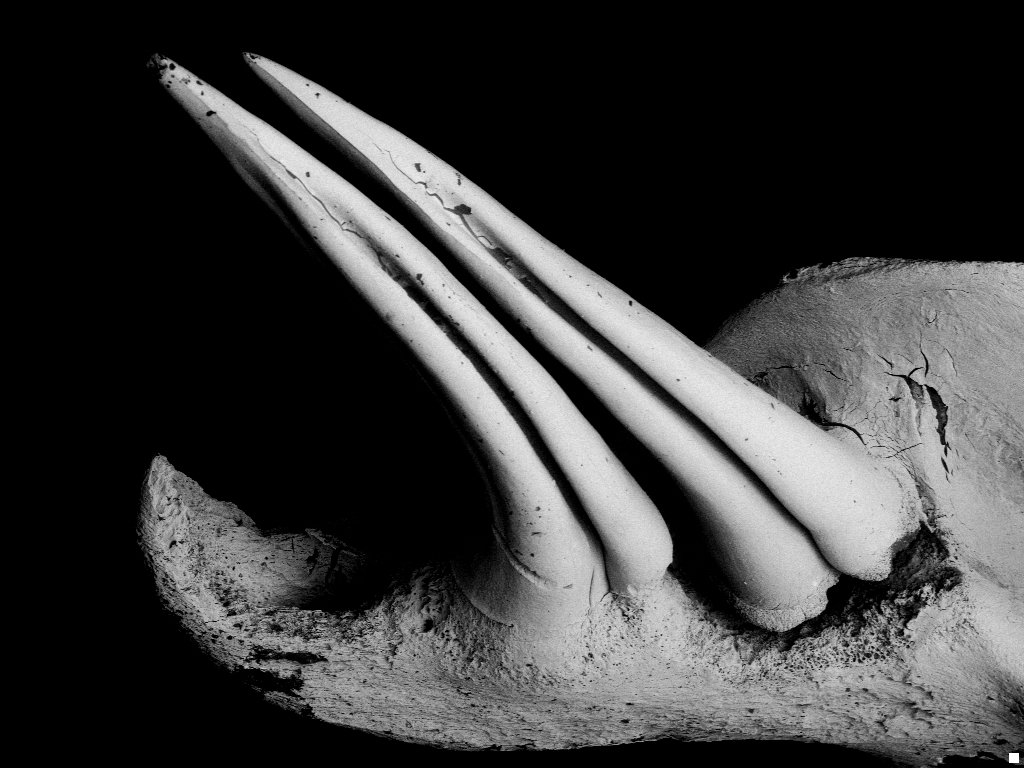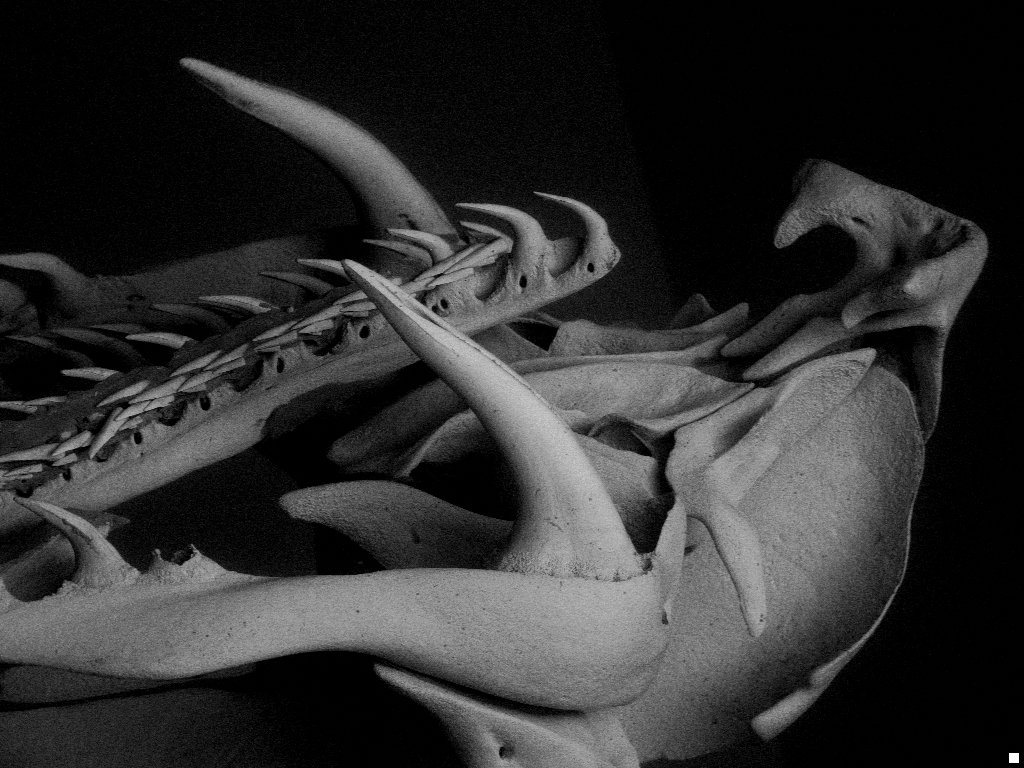Fangs of deadly venomous snakes
On this page...
The fangs of most deadly venomous snakes are syringe-like. That is, they are long and thin, hollow and have a bevelled tip. Like a syringe, these fangs have evolved to deliver a liquid (venom) under pressure. Hence the venom can be delivered quickly in a rapid bite. But how did such fangs evolve?
As is often the case with complex adaptations, we can find clues to their evolution in simpler structures that occur in related species. And in snakes, there is a tooth type that looks like a perfect precursor to the syringe-like fang. This tooth is grooved on its outside edge. Were the groove to be closed over by the two sides, a hollow fang would result.

Grooved fangs of the Brown Tree Snake Boiga irregularis.
Image: Sue Lindsay© Australian Museum
Grooved teeth have evolved in many different kinds of snakes. Generally there is a mild to strong venom associated with these teeth, but because the groove is open, the venom can only "drip" slowly into the wound when the snake bites and chews. Some of these venoms are quite strong, and at least two famous herpetologists (reptile and amphibian biologists) have died from their bite.
There is, however, one problem with evolving fangs from grooved teeth and that is hollow fangs always occur in the front part of the jaw whereas grooved teeth, or fangs, are only know to occur on the rear part of the jaw. This position difference is recognised in two common names for the two tooth types of venom delivering teeth, front-fanged and rear-fanged. Did grooved rear fangs move forward to the front part of the jaw and then their edges closed over, or did the grooves simply develop on the front teeth and then close over? Can you think of any kind of snake, perhaps discovered as a fossil, which would help settle the question?
Among Australian snakes, hollow fangs occur in all of our terrestrial venomous species and in the sea snakes, represented in the scanning electron micrographs shown below of the Red Bellied Black Snake Pseudechis porphyriacus. Grooved fangs occur only in the Brown Tree Snake Boiga irregularis (above) and in a group of freshwater snakes in northern Australia.

Fangs of the Red Bellied Black Snake Pseudechis porphyriacus
Image: Sue Lindsay© Australian Museum

